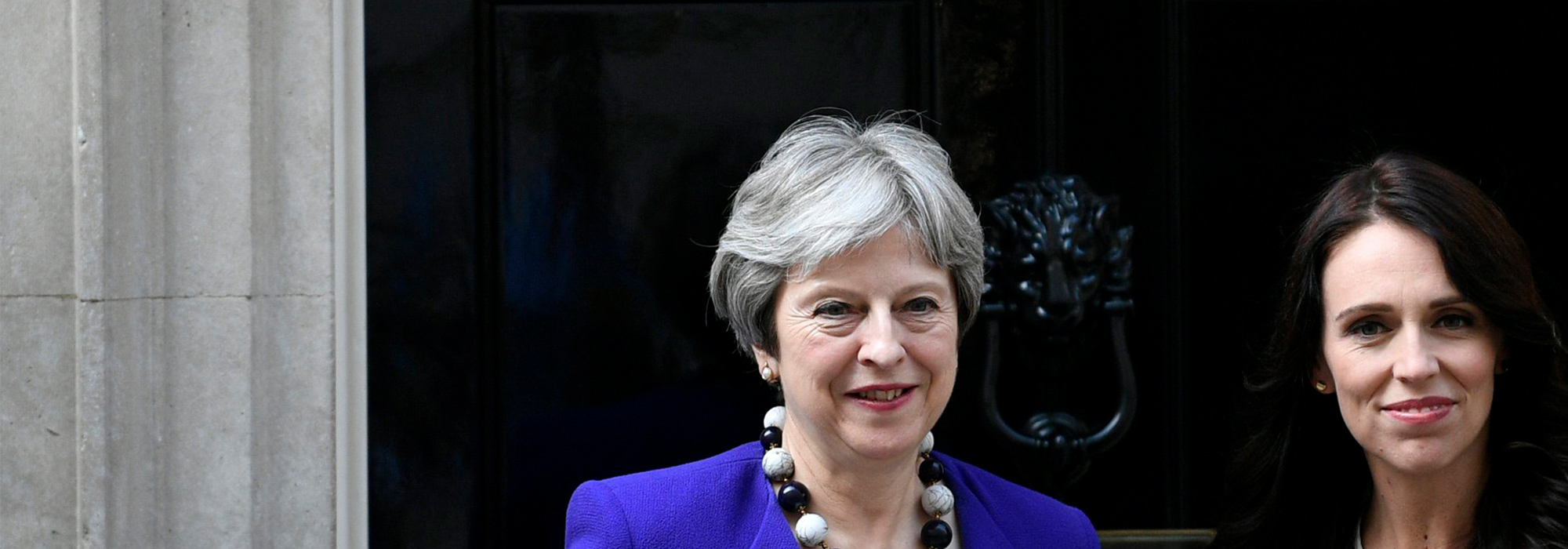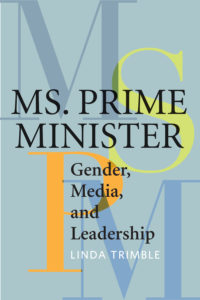
On returning to Parliament after a six-week maternity leave, New Zealand Prime Minister Jacinda Ardern expressed the hope that one day it will be perceived as normal for women to give birth while in office. It’s certainly not considered normal right now. The announcement of Ardern’s pregnancy, accompanied by the news that she would be taking baby leave and entrusting her partner Clarke Gayford with the majority of day-to-day parenting, was greeted with a flurry of media attention. National and international news outlets alike breathlessly awaited the birth, then offered touching photos of the couple cradling newborn Neve. Tellingly, a front-page New Zealand Herald story headlined “Back to business: PM Ardern talks about her big tasks ahead” focused on the minutia of parenting, rather than on the business of politics, although there was a quip about the “political poonami” awaiting her.

As I detail in my book, Ms. Prime Minister: Gender, Media, and Leadership, high profile women politicians have long confronted a mommy problem. If they do bear children, they are questioned about their capacity to perform as leaders while caring for their families. Yet if they choose not to reproduce, they are considered suspect for being unable or unwilling to fulfill their presumed biological destiny. Canada’s Kim Campbell was characterized as unstable and unreliable because she was twice-divorced and childless; Australia’s Julia Gillard was labelled “deliberately barren”; and New Zealand’s Helen Clark was judged unable to relate to the needs of ordinary families because she chose not to have kids. In contrast, Jenny Shipley, New Zealand’s first woman in the top job, was condemned for playing the mom card during an election campaign. It seems that being a political dad is okay, but touting motherhood confers an unfair advantage.
In Ms. Prime Minister, I examined reporting of the first few weeks in office of Campbell, Shipley, Clark and Gillard. I compared how they and their male competitors were described during election campaigns, analyzed the ways in which journalists evaluated how they went about the everyday business of leading a government, and summarized these women’s political legacies upon retirement or resignation.
In addition to dealing with the mommy problem, Campbell, Shipley, Clark and Gillard faced undue attention to their bodies, hairstyles, wardrobes and style choices in the media. Their gender identities were emphasized with phrases like “woman prime minister” or “female leader” as well as musings about whether or not having two X chromosomes would help them win the so-called woman’s vote. Not one of the women was described in the media as looking like a prime minister. All were discursively situated in the private realm of home, family and romantic intimacy. Allegories of romance positioned Clark and Shipley as the metaphorical woman in political relationships, and Campbell and Gillard were pornified by news reports that eroticized their looks and cast them as objects of male desire. On the other hand, journalists’ fixation with the lexicon of warfare, especially in the context of elections, did impart some agency to the four leaders, describing them as fierce, capable and battle-ready.
Only Helen Clark, who competed in five elections and was prime minister for three back-to-back terms, was represented as legitimately and effectively exercising leadership on behalf of the nation. When the news value of her (gender) novelty receded, Clark’s gender was significantly less likely to be marked and her wardrobe less often critiqued in New Zealand’s newspapers. Still, unease with a woman in power intensified the longer she held office. This was evidenced through the trope of toughness and Clark was characterized as ruthlessly authoritarian, with appellations like “political dominatrix” and “Helengrad.”
There are lessons to be drawn here for both the women who aspire to political leadership and the news media who will report their struggles and achievements through the lens of their gender. In addition to the cautions relayed above about how peering into women leaders’ intimate lives and familial relationships tends to undermine their authority, I have the following advice for journalists and political commentators.
First, avoid unnecessary gender grammar, especially the practice of gendering nouns. The media unfairly deal the gender card every time they call a woman the “female” leader or the “woman” prime minister. These phrasings insist that her gender is the story, not her ideas, political acumen and accomplishments. Notice that men are never called the “man” prime minister or the “male” president.
Second, remember that gendered first impressions can, by invoking outmoded stereotypes, derail a woman’s political career. The trope of the uppity woman was abundant in coverage of Kim Campbell’s ascent to the leadership of the Progressive Conservative Party in 1993, and accounts of her alleged arrogance and instability proved damaging. She was represented as too smart, too confident, too eager for power. Imagine the reaction had reporters characterized Stephen Harper in this manner during his bid for the newly constituted Conservative Party in 2004.

Third, be aware of the ways in which metaphors of battle and romance rob women of political agency. Using allegories of love and marriage puts female leaders firmly in their socially constructed “proper” place – the home and family. Describing a leader as a “perfumed political bulldozer” or a “female political killing machine” infers that her toughness is mitigated by her femininity. Perhaps it is time to replace tired these battle metaphors with equally evocative yet gender-neutral accounts of political competition.
Fourth, expose and decry blatant sexism, regardless of whether it is being articulated by political opponents, supporters, pundits or voters. Former Australian prime minister Julia Gillard endured a barrage of sexist insults and misogynistic comments, but she was roundly condemned by the media when she spoke out about it in Parliament. Women politicians continue to be shamed and silenced for speaking publicly about the inequality they experience. As Canadians know all too well from the hostility directed at their premiers, epithets like “witch” and “bitch,” chants of “lock her up,” and actual death threats are the new normal for female leaders. A key virtue of the free press is supposed to be its willingness to call out these forms of unfair treatment.
The political legitimacy of women government leaders is routinely questioned by gendered metaphors, stereotypes, and assumptions and the normalization of everyday sexism. However, the news has the capacity to unsettle seemingly intransigent gender codes, not least the public man/private woman binary. Jacinda Ardern’s confident and, as she puts it, “relentlessly positive” leadership challenges the assumption that it is women who take care of the babies, while men take charge of the nation. Hopefully, the media and the public alike will eventually get used to the sight of a woman in charge.
Photo: Britain’s Prime Minister Theresa May (L) welcomes New Zealand’s Prime Minister Jacinda Ardern (R) for a meeting at 10 Downing Street in London, on April 18, 2018. EPA/NEIL HALL
Do you have something to say about the article you just read? Be part of the Policy Options discussion, and send in your own submission. Here is a link on how to do it. | Souhaitez-vous réagir à cet article ? Joignez-vous aux débats d’Options politiques et soumettez-nous votre texte en suivant ces directives.










